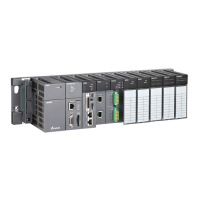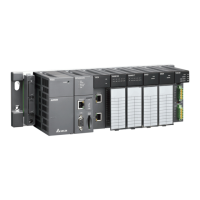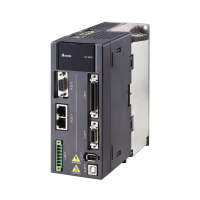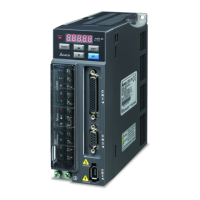Chapter 2 Devices
2-7
The decimal number in the PLC is used as
the setting value of the timer (T) or the setting value of the counter (C/HC). For example,
TMR C0 50 (constant K).
the device number. For example, M10 and T30 (device number)
as the number before or after the decimal point. For example, X0.0, Y0.11, and D10.0
(device number).
the constant K: It is used as the operand in the applied instruction. For example, MOV 123
D0 (constant K).
3. Binary-coded decimal (BCD)
A decimal value is represented by a nibble or four bits, and therefore sixteen consecutive bits
can represent a four-digit decimal value.
4. Hexadecimal number (HEX)
The hexadecimal number in the PLC is used as
the constant 16#: It is used as the operand in the applied instruction. For example, MOV
16#1A2B D0 (hexadecimal constant).
The following is the reference table:
Binary-coded decimal number
(BCD)
Internal operation
in the PLC
Decimal constant,
device number
Instruction related to the
binary-code decimal number
constant,
2.2.2 Floating-point Numbers
The floating-point numbers are represented by decimal points in ISPSoft. For example, the
floating-point number of 500 is 500.0.
2.2.2.1 Single-precision Floating-point Numbers
The floating-point number is represented by the 32-bit register. The representation adopts the
IEEE754 standard, and the format is as follows.

